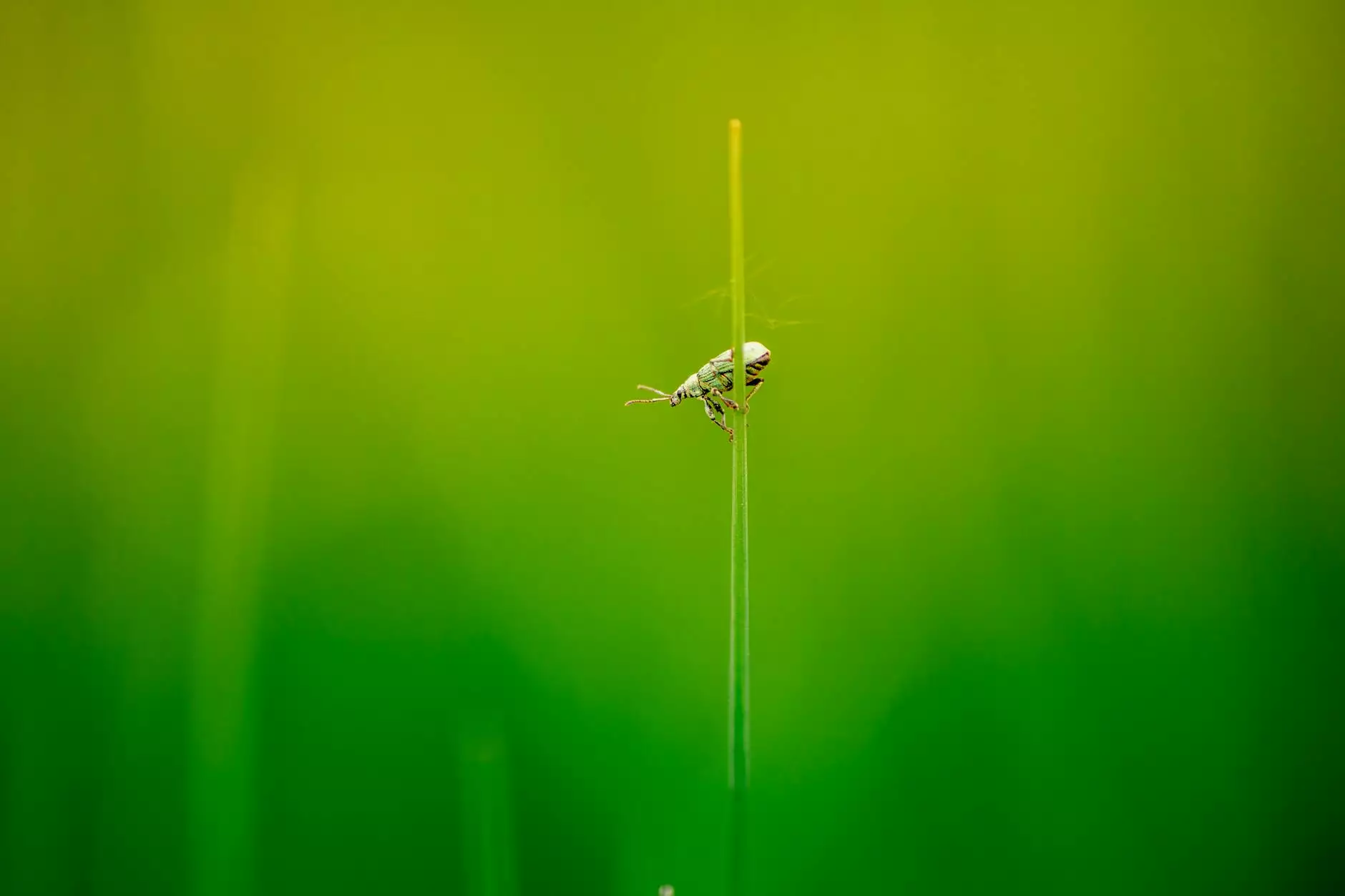Effective Granary Weevil Control: Protecting Your Harvest

Granary weevils are a common pest that can wreak havoc on stored grains, posing a significant threat to farmers and grain handlers alike. Understanding how to control these pests is crucial for maintaining the quality and safety of your grain products. In this comprehensive guide, we will explore effective strategies for granary weevil control, ensuring your harvest remains protected from these destructive insects.
Understanding Granary Weevils
The granary weevil, scientifically known as Sitophilus granarius, belongs to the family of snout beetles. Adult weevils are approximately 3 to 5 mm long, with a brownish-black appearance, and they are easily identifiable by their elongated snouts. These pests typically invade grains during storage, and their lifecycle can lead to significant losses if not controlled effectively.
Lifecycle of the Granary Weevil
Understanding the lifecycle of the granary weevil is essential for effective control. The lifecycle includes four stages: egg, larva, pupa, and adult. The process begins when the female weevil lays eggs inside whole grains. Here’s a breakdown of their lifecycle:
- Egg Stage: Females lay up to 400 eggs in the kernels, and they prefer kernels with high moisture content.
- Larval Stage: Once the eggs hatch, the larvae burrow into the grain, feeding on the kernel from the inside. This stage lasts about 2-3 weeks.
- Pupal Stage: After feeding, larvae pupate within the grain, which can take an additional week. This stage is critical for developing into an adult.
- Adult Stage: Adult weevils emerge from the grain to continue the cycle, often leading to rapid population increases if uncontrolled.
Importance of Granary Weevil Control
Effective granary weevil control is vital for several reasons:
- Preservation of Grain Quality: Infestations can lead to grain spoilage, reducing its market value and quality.
- Preventing Economic Loss: The costs associated with infestations can be significant, including loss of product and the expenses related to pest control measures.
- Health Concerns: Infested grain can lead to contamination with molds and mycotoxins, posing health risks to consumers and livestock.
- Maintaining Reputation: Farmers and grain producers must maintain their reputation by ensuring that their products are pest-free.
Prevention: The First Step in Granary Weevil Control
Prevention is always better than cure. Implementing effective preventive measures can minimize the risk of weevil infestations:
1. Grain Inspection
Before storing grain, thorough inspections are crucial. Check for any signs of existing infestations or damage. Make sure to:
- Examine grain for holes, frass (excrement), or webbing.
- Test moisture levels; ideal moisture content should be below 13% to deter weevil infestations.
2. Proper Storage Techniques
Using airtight storage solutions is vital for preventing pest access. Here are a few tips:
- Use Sealed Containers: Store grains in sealed containers to prevent weevil entry.
- Maintain Clean Storage Areas: Ensure that storage facilities are clean and free from any remnants of previous grains.
- Regular Monitoring: Implement routine checks to detect any early signs of infestation. Using traps can be an efficient method for monitoring.
3. Temperature and Humidity Control
Granary weevils thrive in certain temperature and humidity conditions. Therefore, controlling these factors can significantly reduce the likelihood of infestations:
- Lower Temperature: Keeping storage areas cool (below 50°F or 10°C) can hinder their development.
- Reduce Humidity: Aim for a humidity level of approximately 50% to limit their survival chances.
Detection: Identifying Granary Weevil Infestations Early
Early detection is key to managing weevil populations effectively. Farmers should routinely monitor their grain stores for signs of infestation. Here are some methods for detection:
1. Visual Inspection
Regularly inspect grains for any visible signs of weevils. Look for:
- Small Holes: Tiny holes on the surface of grains signal weevil activity.
- Presence of Adults: Spotting adult weevils during inspection indicates a population already established.
2. Use of Traps
Traps can be used to monitor the presence of weevils. Use pheromone traps specifically designed for granary weevils:
- Pheromone Lures: These attract male weevils, allowing you to gauge the infestation level.
- Regular Monitoring: Check traps regularly to stay informed about the weevil population status.
Granary Weevil Control Methods
When an infestation is detected, prompt action is necessary to control it. Various control methods include:
1. Chemical Control
The use of pesticides is sometimes necessary for severe infestations. Consider the following:
- Insecticides: Use products that are specifically labeled for granary weevil control. Always follow the manufacturer's safety guidelines.
- Granular Insecticides: These can be spread on the grain to control pests effectively.
2. Biological Control
Natural predators can also contribute to controlling granary weevil populations:
- Beneficial Insects: Introducing certain predatory insects can help manage weevil populations.
- Microbial Agents: Certain bacteria and fungi can also have detrimental effects on weevil larvae.
3. Physical Control Methods
Incorporating physical methods can be effective in reducing weevil populations:
- Heat Treatment: Exposing grain to high temperatures (above 140°F or 60°C) for a short period can effectively kill weevils.
- Freezing: For smaller batches, placing grains in a freezer for a couple of days can eliminate weevils.
4. Monitoring and Follow-Up Treatments
Once control measures are in place, continued monitoring and follow-up treatments are critical. Ensure:
- Regular inspections continue even after treatment.
- Reapply treatments as indicated by pest activity to keep the granary weevil population in check.
Future Considerations: Innovations in Granary Weevil Control
The agricultural sector continuously evolves, with new technologies and methods being developed to combat pests like granary weevils. Innovations include:
- Smart Monitoring Systems: These systems utilize sensors and AI to detect pest populations and provide real-time alerts.
- Integrated Pest Management: Emphasizing a holistic approach that combines biological, chemical, and cultural practices for sustainable pest control.
- Research Innovations: Ongoing research into pest-resistant grain varieties may soon offer long-term solutions to weevil infestations.
Conclusion
In conclusion, effective granary weevil control is essential for maintaining the integrity of stored grains. By implementing proper prevention techniques, ensuring early detection, and applying appropriate control methods, farmers can protect their harvests from these destructive pests. As technology and research progress, embracing new solutions will further empower farmers to safeguard their products and ensure a successful yield. Protect your investment today by prioritizing effective pest management strategies that keep granary weevils at bay.
For more insights on managing your farming equipment and pest control solutions, visit tsgcinc.com.









